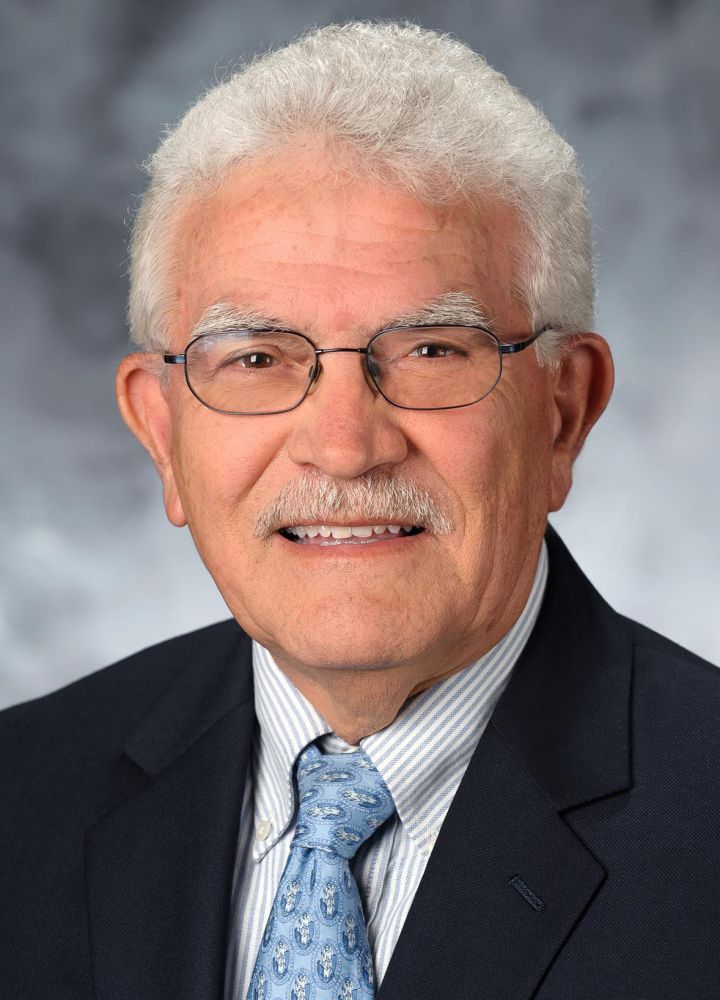
A Man of Letters
Francisco Lomelí is one of the busiest men in Spanish publishing at the moment. The professor of Chicano and Chicana Studies and of Spanish and Portuguese at UC Santa Barbara has three works out now — a reference book on Latino literature, a revised and updated anthology of essays on Aztlán and a magazine of Latino arts and literature.
A contributing writer or editor to all three works, Lomelí is something of a perpetual motion publishing machine, with two more books in the pipeline. The first, “Historical Dictionary of U.S. Latino Literature” (Rowman & Littlefield, 2017), is an exhaustive chronicle of 115 authors who have made important contributions over the centuries.
“Students will love it,” said Lomelí, who noted the book includes individual bibliographies for every author. “It will save them a lot of work. The bibliography alone will be very valuable.”
The product of five years of research, the dictionary was co-authored by two scholars at California State Monterey Bay: Donaldo Urioste, a professor of Spanish language and Hispanic literature, and María Joaquina Villaseñor, an associate professor in the School of Humanities and Communication.
Urioste, the lead author, was especially helpful in compiling the bibliography, Lomelí said. “He’s been keeping tabs on every possible book you can find since the 1960s,” he noted.
One of the features of the book is a 35-page chronology that reaches back to 1325 and the Aztec capitol of Tenochtitlan, now Mexico City. It’s the most extensive of its kind, Lomelí said. The book also took a comprehensive approach in selecting writers. It includes not only Chicano authors, but also Latinos in the U.S. with backgrounds from Cuba, Puerto Rico, Colombia, Chile and more.
“We wanted to do about 350 authors, but there was just no way we could do that,” Lomelí said. “I’m very proud of it. The type of material that we provide here, in terms of information, I think is absolutely invaluable for students and scholars.”
The second book, “Aztlán: Essays on the Chicano Homeland” (University of New Mexico), is a completely reworked edition of the original, which was published in 1989. Edited by acclaimed Chicano author Rudolfo Anaya, Lomelí and Enrique Lamadrid, a professor of Spanish at the University of New Mexico, the new edition reflects nearly three decades of fresh thinking about Aztlán.
“For example, there’s even one on queer Aztlán,” Lomelí pointed out. “In 1989 nobody would have thought of writing anything like that. At all.”
The new edition also includes the first article on Aztlán written by a Chicano. “We always thought it was Luis Leal, who’d been a professor here at UCSB,” Lomelí said. “We thought his was the first from 1979. And no, there was one from 1973, so we included it. Aztlán is a Chicano myth within the larger American myths.”
Although academic works about Aztlán followed in the wake of the Chicano Movement of the 1960s, the myth has had cultural resonance much longer. Known as the ancestral home of the Aztecs, Aztlán was said to be somewhere north of Mexico City. Just how far north is an open question, although many Chicanos believe it’s in the U.S. Southwest.
“My father, who was not very literate — he learned how to read and write when he married my mother in 1934 in Mexico — even he said, ‘We have come back to our land,’ ” Lomelí said. “How did he get that notion? In a sense he’s saying, ‘We’re coming back to Aztlán.’ So even at the folklore level it’s very much present.”
The third publication, the magazine Ventana Abierta, co-edited by Lomelí and Sara Poot-Herrera, a professor in UCSB’s Department of Spanish and Portuguese, features the work of Juan Felipe Herrera, current Poet Laureate of the U.S.
It also includes a poem by Anaya, whom Lomelí called “probably the best-known Chicano writer anywhere.” Anaya wrote it the day after a gunman killed 49 people in Orlando, Fla., in 2016.
Sponsored by UC Mexicanistas, the Spanish-language journal of literature and arts is published twice a year.



